How To Find Out Your Windows Wireless Drivers & Adapters
Wireless technology has made devices more portable over the decades. Without the interruptions of the cable, we can now take our internet anywhere be it on the phone or on a computer. To ensure advancements in the computer technology, the different components are made by different specialized companies; from the processor, to the wireless adapter cards. Computer manufacturers however assemble these components on site into one system. To function correctly with other components, the devices must come with instruction codes on how they operate. These are known as the drivers, and they are available online from the computer manufacturer website or the device manufacturer website.
Drivers are specific to an operating system, such that the drivers for a wireless adapter will work in windows XP and not in windows 7 or 10 or vice versa. The drivers might work in a 64 bit operating system, and not on a 32 bit operating system. If your wireless driver is not functioning then probably the drivers are missing or the wrong drivers have been installed.
Getting your wireless drivers
So how can one tell the wireless drivers needed on their computer? One way to identify your device is to go to the device manager (Press Windows Key + R > Type devmgmt.msc and hit enter) and see the device names then download the drivers for them. The wireless adapter device should be under the ‘Network Adapters’ section. This works when you need to update your drivers. However, if your wireless device drivers have not been installed at all, then your wireless adapter will not be listed under this category. Instead, it will be listed under the ‘Others’ category as ‘Network adapter’ with no name showing as the image below illustrates.
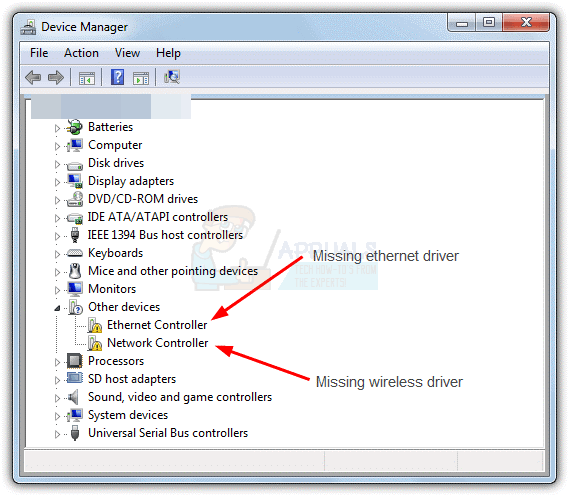
In such a situation, how can one know which wireless adapter driver is needed? It is pretty obvious that the device name will be written in the network adapter inside your PC. But disassembling your PC to get this information can be too much for a simple problem, even for a technical person. It is also likely that the WLAN device name might be listed under a stick in your PC or in the battery compartment. This is one simple way to find the drivers you need.

The Device Manager is worthless for your specific inquiry, which is to determine the manufacturer and device name. There are tools in windows that could get you this information e.g. DxDiag.exe (press windows key + R and type dxdiag then hit enter) which is more limited to the processor and display info; not helpful for networking info. A common reasoning would be to find someone with a similar laptop and go through his device manager. This cannot work all the time since computer manufacturers can use up to 3 different devices for the same computer model.
This article will show you how you can tell the wireless drivers you need for your PC.
Method 1: Using MsInfo32.exe tool to identify your device
MsInfo32.exe tells you some detailed info about the system and each device and protocol, including manufacturer in most cases.
- Press Windows key + R to open Run
- Type MsInfo32.exe and hit enter to open the system information window
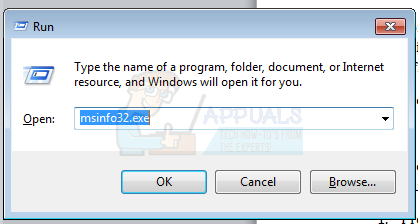
- In the system information window, expand the components section by clicking the +
- Under the components section, click on ‘problem devices.’ This is where devices with missing drivers will be shown.
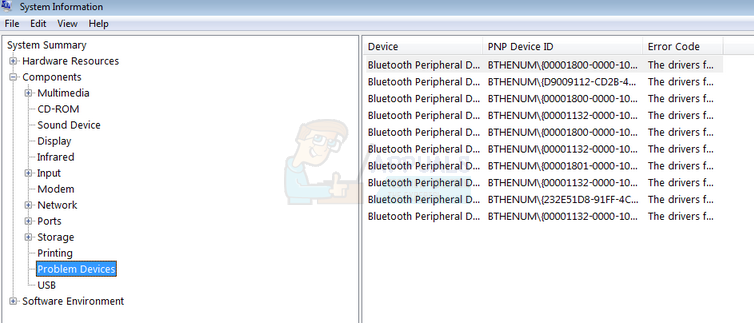
- Your wireless adapter name and manufacturer will be displayed here
- Using your device name and manufacturer information, go online and search for your drivers, download them and install them.
Method 2: Use WinAudit (third party applications) to find your device info
This is a straight forward tool to use. It might take 2 minutes to load but you can stop it as soon as the needed section is loaded.
- Download the WinAudit tool from here and copy it in the computer in question
- Run WinAudit
- Wait a couple of minutes and for WinAudit to complete reading your system information.
- On the left panel, go to the ‘Network TCP/IP’ section, open the ‘Network Adapters Subsection, and click on your wireless/WLAN device (it will probably contain the name ‘Wireless’ or ‘WLAN’ in it)
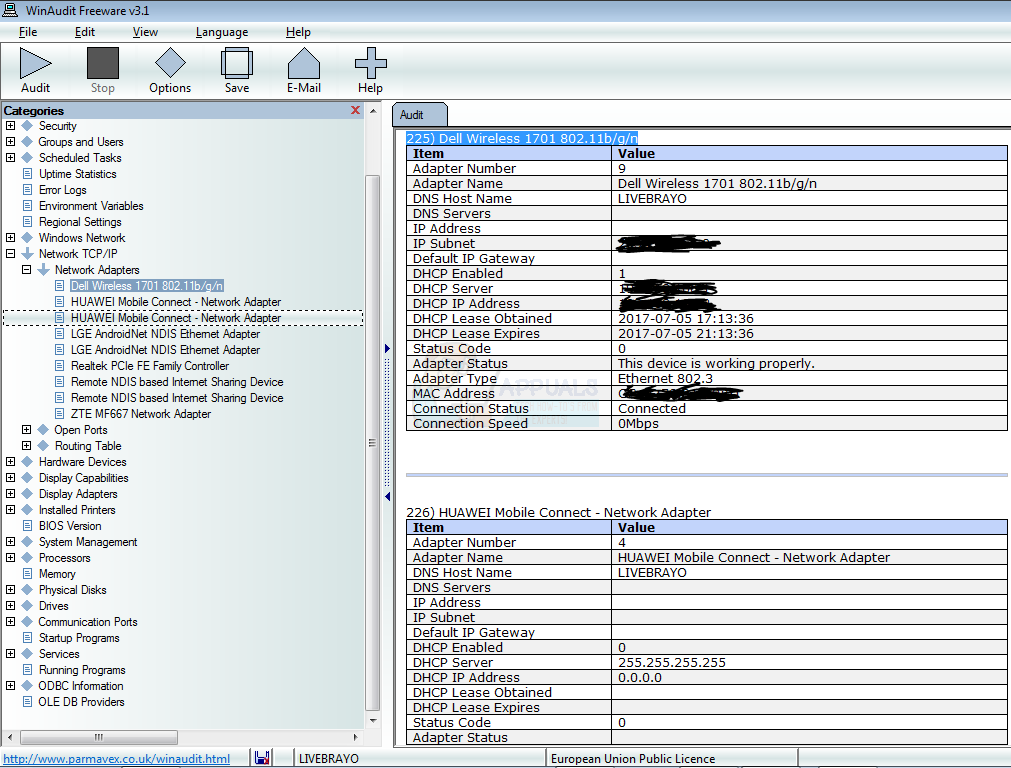
- Using your device name and manufacturer information, go online and search for your drivers, download them and install them.
Method 3: Using the device ‘Hardware IDs’ to find the wireless device online
Each device is tagged with an ID (A series of numbers and characters) that can be used to identify it from the rest. You can use this ID to find your wireless adapter device name online and use the name and manufacturer id to download drivers.
- Press Windows Key + R to open Run
- Type ‘devmgmt.msc’ and hit enter to open device manager

- If it is not installed, your wireless device will be under the ‘Others’ section with listed as ‘Network Adapter.’ If it was not installed correctly, it will be under ‘Network Adapters’ but with a yellow exclamation mark.
- Right click on the adapter, and select ‘Properties’
- Go to the details tab
- Under the property dropdown menu, select ‘Hardware IDs’

- Right click and copy the top string of characters you see in the window. Those will ID the model of the wireless card you have in your PC

- Open a browser and do a Google search for the characters you just copied (if you are not connected to the internet in any way, you will need to find a PC that is connected to the internet for this purpose).
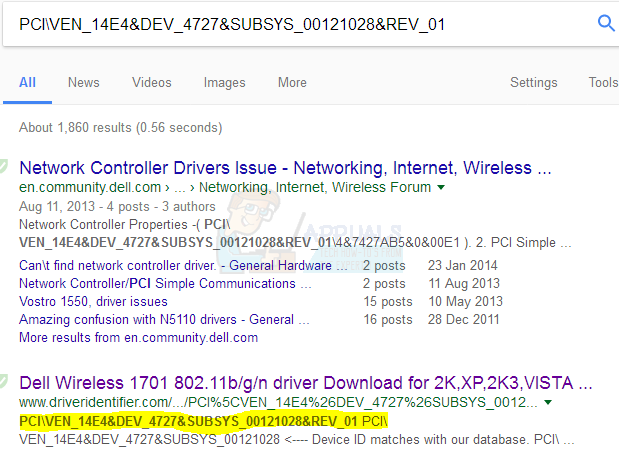
- Using the information you find, go to the manufacturer’s website and download the drivers for your network adapter and install them.
There other apps and services that can identify your card and the needed drivers. Unfortunately, you will need an internet connection on the PC with the driver problem. If you have an Ethernet (LAN) connection on the said PC, you could visit your manufacturers website and use their driver identifier service.